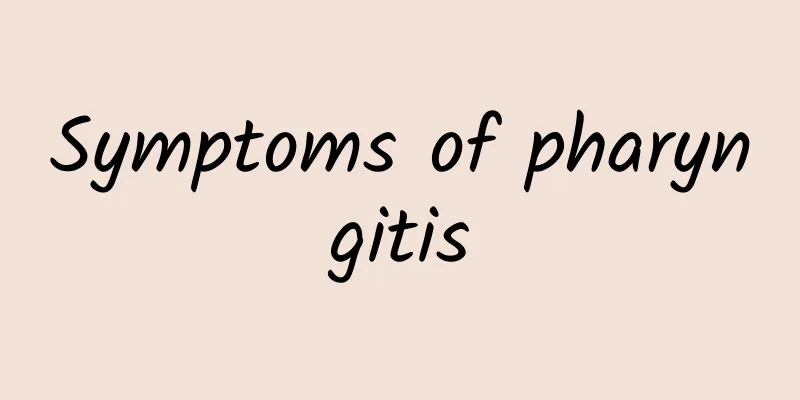Headache with eye pain

|
When you have a headache, it will affect other parts of the body, such as the ears and eyes. Therefore, headaches do cause a lot of pressure on the human body because of mental tension, excessive fatigue or long hours in front of the computer, including certain diseases in the brain sending us signals, which can all cause headaches. Moreover, after the headache occurs, it will also cause eye pain. treat 1. Sinusitis Treat with anti-nasal congestion medications, analgesics, and antibiotics. 2. Brain diseases Treat with antibiotics, analgesics, anticonvulsants, and osmotic diuretics and, if necessary, surgery and, if the tumor has spread, chemotherapy and radiation therapy. Clinical manifestations 1. Disease situation Acute onset with fever is often caused by infectious diseases. Acute headache that persists without abating and is accompanied by varying degrees of impaired consciousness without fever suggests intracranial vascular disease (such as subarachnoid hemorrhage). Long-term recurrent or throbbing headaches are mostly vascular headaches (such as migraine) or neurosis. Chronic progressive headaches accompanied by symptoms of increased intracranial pressure (such as vomiting, bradycardia, and papilledema) should be noted as indicating intracranial space-occupying lesions. Chronic headaches in young and middle-aged people, but without increased intracranial pressure, often occur due to anxiety and emotional tension, and are mostly muscle contraction headaches (or tension headaches). 2. Headache location Knowing whether the headache is unilateral, bilateral, frontal or occipital, localized or diffuse, intracranial or extracranial is of great value in diagnosing the cause. For example, migraine and cluster headaches often occur on one side. The headache caused by intracranial lesions is often deep and diffuse. The location of the headache caused by deep intracranial lesions is not necessarily consistent with the location of the lesion, but the pain often radiates to the same side as the lesion. Headaches caused by high blood pressure often occur in the forehead or the entire head. Headache caused by systemic or intracranial infectious diseases is mostly pain in the whole head. Subarachnoid hemorrhage or cerebrospinal meningitis may cause neck pain in addition to headache. Ocular headaches are superficial and localized to the orbit, forehead, or temporal areas. Rhinogenic or odontogenic pain is also mostly superficial. 3. The degree and nature of headache The degree of headache is generally divided into three types: mild, moderate and severe, but there is no parallel relationship between the severity of the disease. The pain of trigeminal neuralgia, migraine and meningeal irritation is the most severe. The pain from a brain tumor is usually moderate or mild. Sometimes neurological headaches are also quite severe. Headaches caused by hypertensive, vascular and febrile diseases are often pulsating. Neuralgia is often electric shock-like or tingling, while muscle contraction headaches are often heavy pressure, tightness, or clamp-like pain. 4. The time and duration of headache Some headaches may occur at specific times. For example, intracranial space-occupying lesions often worsen in the early morning. Sinusitis headaches also often occur in the early morning or morning. Cluster headaches often occur at night. Migraines in women are often related to the menstrual period. Headaches caused by brain tumors are usually persistent and may have remission periods of varying lengths. 5. Factors that aggravate or relieve headaches: Coughing, sneezing, shaking head, and bending over can aggravate intracranial hypertension headaches, vascular headaches, intracranial infection headaches, and brain tumor headaches. Cluster headaches are relieved by standing upright. Headaches caused by acute inflammation of the cervical muscles may be aggravated by neck movements; headaches caused by chronic or occupational cervical muscle spasms may be gradually relieved by moving and massaging the cervical muscles. Migraine headaches can be relieved by taking ergotamine. |
<<: What should women eat when they have a headache?
Recommend
Can neurological tinnitus be cured? 4 major therapies to help you get rid of your troubles
Neurological tinnitus is a common experience amon...
Can mycoplasma infection in children heal itself?
Mycoplasma infection in children is relatively co...
What is Ovarian Cancer
Female friends must pay attention to their reprod...
The difference between burdock root and burdock seed
Burdock seeds and burdock roots both belong to bu...
The best treatment for acne
The skin of our human body is the largest organ, ...
What causes pain under the belly button in women?
Women are very prone to abdominal pain, which is ...
What to eat for kidney deficiency and qi deficiency? Three foods are worth choosing
It has to be said that most people's daily di...
TCM Thyroid and Therapy
Traditional Chinese medicine focuses on fundament...
How to treat pustular acne
Everyone loves beauty, especially women, for whom...
Hyperprolactinemia
Many people may not have heard of hyperprolactine...
What is the medicinal value of seaweed
The so-called nori is actually a very broad term....
What are the dangers of pelvic cysts and ovarian cysts?
Clinically, ovarian cysts often present with lowe...
Side effects of realgar, clinical application of realgar
Speaking of the Chinese medicinal material realga...
Can autism be cured?
Children's health is a topic of great concern...
What are the effects of lotus money grass
Lotus money grass can be found in most parts of m...









